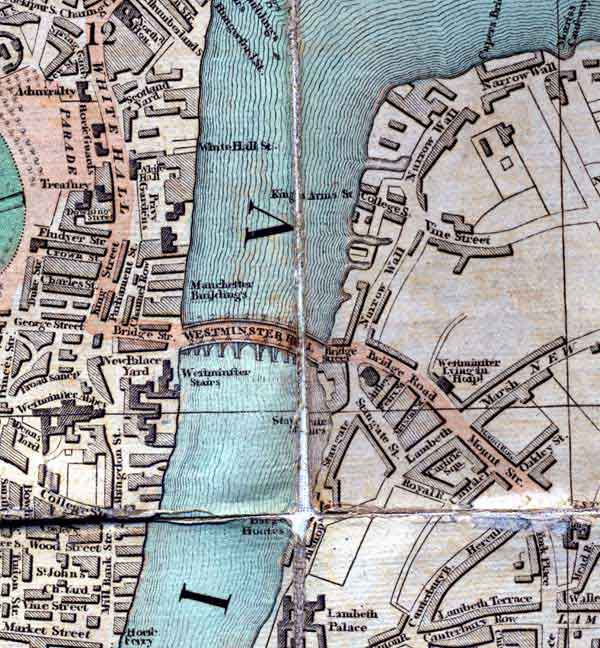A Topographical and Statistical Description of the County of Middlesex etc (1810) by George Alexander Cooke:
Adjoining the south-east angle of Westminster Hall is a building formerly used as a place of worship, and dedicated to St Stephen; it as funded by King Stephen and rebuilt in 1347, by Edward III who made it a collegiate church; since however, the period of its surrender to Edward VI it has been constantly employed for the meetings of parliament and is now generally known by the appellation of the House of Commons. The west front with its beautiful Gothic window is still visible from the stairs leading to the court of requests, and is of the sharp-pointed species of Gothic; between it and the lobby of the house is a small vestibule of similar workmanship ,and great elegance ; there is a Gothic door at each end and another in the middle , opening into the lobby. The decorations of the interior of this chapel are now approximate to its present use, it is capable of containing 600 persons and has commodious apartments as the Speaker's Chamber, Committee rooms etc adjoining to it. The benches for the members gradually ascending as in a theatre, are covered with green cloth, the floor is matted and there are galleries for the accommodation of such strangers as are desirous of hearing the debates. The Speaker's chair, which is handsomely decorated, occupies the upper end of the room; before him is a table at which the clerk and his assistants sit near him, on each side at the foot of his chair. The members sit promiscuously upon the benches and in the galleries. Except the Speaker and the Clerks who always wear gowns in the house, as the lawyers do in term time, none of the members of the House of Commons wear any dress of ceremony.
Use the "Show me" link to locate The House of Commons on the map. You may need to scroll down to see The House of Commons highlighted.


 Chapter 1
Chapter 1 
